![]()
![]()
![]()
Use LEFT and RIGHT arrow keys to navigate between flashcards;
Use UP and DOWN arrow keys to flip the card;
H to show hint;
A reads text to speech;
13 Cards in this Set
- Front
- Back
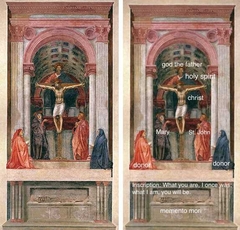
Trinity Masaccio 1425,S.M. Novella, Florence -Early Renaissance(Florence) |
-linear perspective because Mary and John facing up towards the holy trinity -This is a fresco -The architecture on the ceiling is inspired from ancient Greek and roman |
|
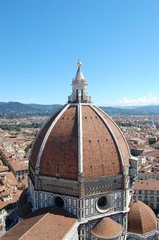
Brunelleschi Florence Cathedral Dome 1420-36 -Early Renaissance(Florence) |
-Double shell so it won't fall. -skeletal like structure underneath to hold the dome together |
|
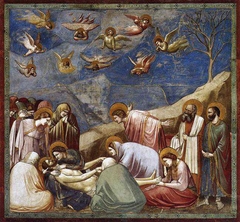
Lamentation -Giotto, 1305 -Gothic transition |
-Linear perspective because everyone one is looking down at Jesus. And the rocky hill also draws our our to jesus -expresses naturalism because Giotto paint figures with their backs turn.
|
|
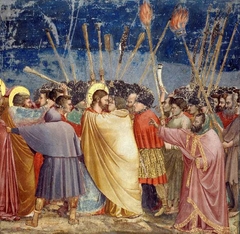
Arrest of Christ Giotto, 1305 Gothic transition |
Sense of chaos because of how the weapons in the air are not held orderly -also uses linear perspective because the weapons make up a line pointing to jesus and judas |
|
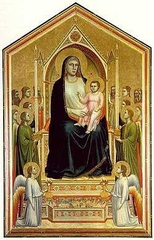
Madonna enthroned Giotto, 1310 Gothic transition |
Figures in the painting are not stacked on each other. Instead the are more naturally positioned |
|
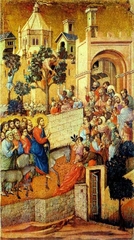
Christ Entering Jerusalem(maestas alterpiece) -Duccio, 1309 -Gothic transition |
Jesus is larger than the other figures - all the element in this painting of this moment are in the gospels |
|

Virgin and Child Enthroned with Saints Duccio, 1309 Gothic transition |
Mary is the largest figure Duccio used churoscuro |
|
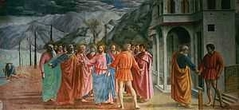
Tribute money Masaccio, 1424 Early Italian renaissance |
Uses continuous narrative. One part show Peter at the lake fishing like jesus instructed to and another part show Peter paying the tax collector |
|
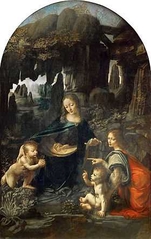
Virgin of the Rocks Da Vinvi, 1485 High Renaissance |
Painting lines up in a triangle Jesus is identify as the baby holding up 3 fingers, not the one with Mary's arm around |
|
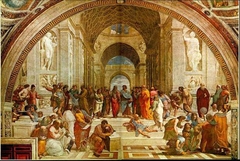
School of Athens Raphael, 1509 High Renaissance |
Plato is identified by him pointing up because he was intrested in the theoretical. Aristotle is identified with his hand down because he was intrested in the observable and physical realm of earth |
|
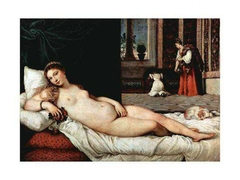
Venus of Urbino Titian, 1536 Venetian Renaissance |
Uses colorito Dog is represented in the painting as a symbol of fidelity |
|

Venus of Urbino Titian, 1536 Venetian Renaissance |
Uses colorito Dog is represented in the painting as a symbol of fidelity |
|
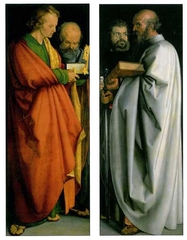
Dürer The four apostles 1526 Reformation North Europe |
Was made to represent the protestant reformation. The saints in the foreground John and paul were important in the reformation |

